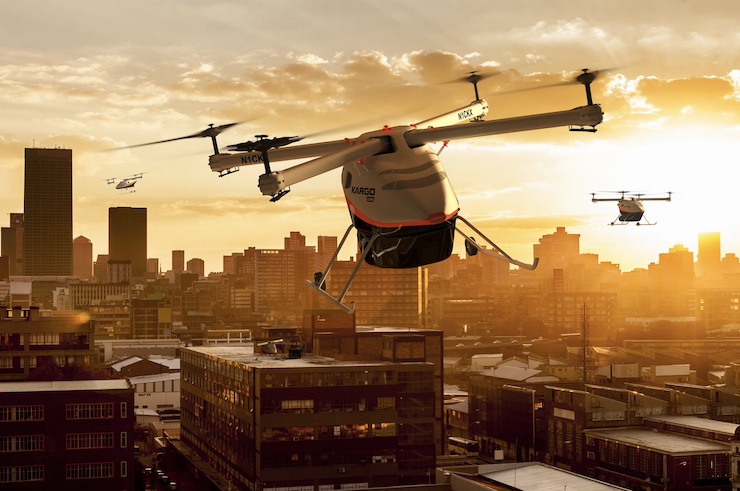
As a boy growing up along the banks of Africa’s Niger River, Kingsley Fregene was always fascinated by the juxtaposition of nature and robotics, particularly how they applied to aviation. He recalls watching hummingbirds fly and then trying to emulate their process by making paper airplanes. “My paper aircraft needed to be folded nicely in place to fly,” Kingsley said. “Hummingbirds are the exact opposite. Their flight patterns are elegant.” Still, he recognized as a child that there was a similar link that made both his paper airplane and the hummingbird capable of flight.
After earning his Ph.D. in Electrical and Computer Engineering from the University of Waterloo in Canada, Kingsley went on to develop aerial robotics systems for companies like Honeywell while also working with government agencies such as the Los Alamos National Labs, DARPA, the DoD, and AFRL. In 2008, Kingsley joined the team at Lockheed Martin, where he is the Director of Technology Integration and Intellectual Property and serves as a Chief Engineer. He has won numerous awards for his work in control practice and was recently named an IEEE Fellow.
The basis of his day-to-day work is the development of autonomous drones through control practice. “Control practice is a form of engineering focused on human and automated interfacing,” Kingsley’s Lockheed Martin bio explains. “Fundamentally, it’s developing consistent feedback to keep something at a desired state. And it’s easy to miss because it’s happening all around us on various scales. Automatic control is seen in any system that reacts to a sensed change without a human operator, so consider climate control in a refrigerator or a car’s cruise control. Control theory can be applied to many different devices, processes, and systems, but it all goes back to taking something seemingly complex and turning it into an automatic, self-operating system.”
Just like when he was young, Kingsley turns to nature for inspiration in many of his projects. In 2011, Lockheed Martin announced a new drone concept Kingsley had developed that was inspired by a simple maple seed. The drone, called the Samarai, weighed less than half a pound, was 16 inches long, could take off vertically from the palm of someone’s hand, hover, and had only two moving parts. “Our team has taken the basic shape and design of the naturally aerodynamic maple seed and harnessed it with flight controls and avionics,” said Kingsley. “We’ve learned a great deal about biologically inspired vehicles that we can apply across the laboratory, including a better understanding of micro-robots and the devices that control their movement.”
The Samarai was also unique because it was a wholly rotating drone that spun like a maple seed dropping from a tree. It was manufactured through inexpensive 3D printing and could be easily transported, launched, controlled, and retrieved. The success and scalability of the Samarai drone led to a partnership between Kingsley and a team from Kaman Aerospace to convert their K-Max helicopter from a manned to an unmanned vehicle. The resulting product is the KARGO UAV, a heavy-lift drone that can be applied in several fields, including military, logistics, and emergency response.
As explained on Kaman’s website, “Reliable, affordable, and maintainable, KARGO UAV self-deploys beyond 500 nautical miles and carries up to 800 pounds of payload. With built-in autonomy, KARGO UAV will be unconstrained by no-go terrain, will sense and avoid obstacles en route, and deliver payloads with pinpoint accuracy.” For Kingsley, he was inspired to work on this drone as a method of providing help to people in need. He envisions the KARGO UAV as being critical in providing life-saving aid to places like disaster zones, where it could be unsafe to send in a manned helicopter.
As of now, the KARGO UAV has only been used in demonstrations of disaster relief scenarios. Kingsley and his team continue to apply control practice models to ensure that the drone will reach its full potential. “I’m energized by the opportunity to contribute to capabilities that keep the nation safe,” Kingsley said. Small drones like Kingsley’s Samarai have been keeping people safe for years by providing military assistance, rescue aid, and now delivering medications and vaccines. Soon, through the continued dedication of scientists like Kingsley, redesigned helicopters will operate as drones in much the same capacity.
|